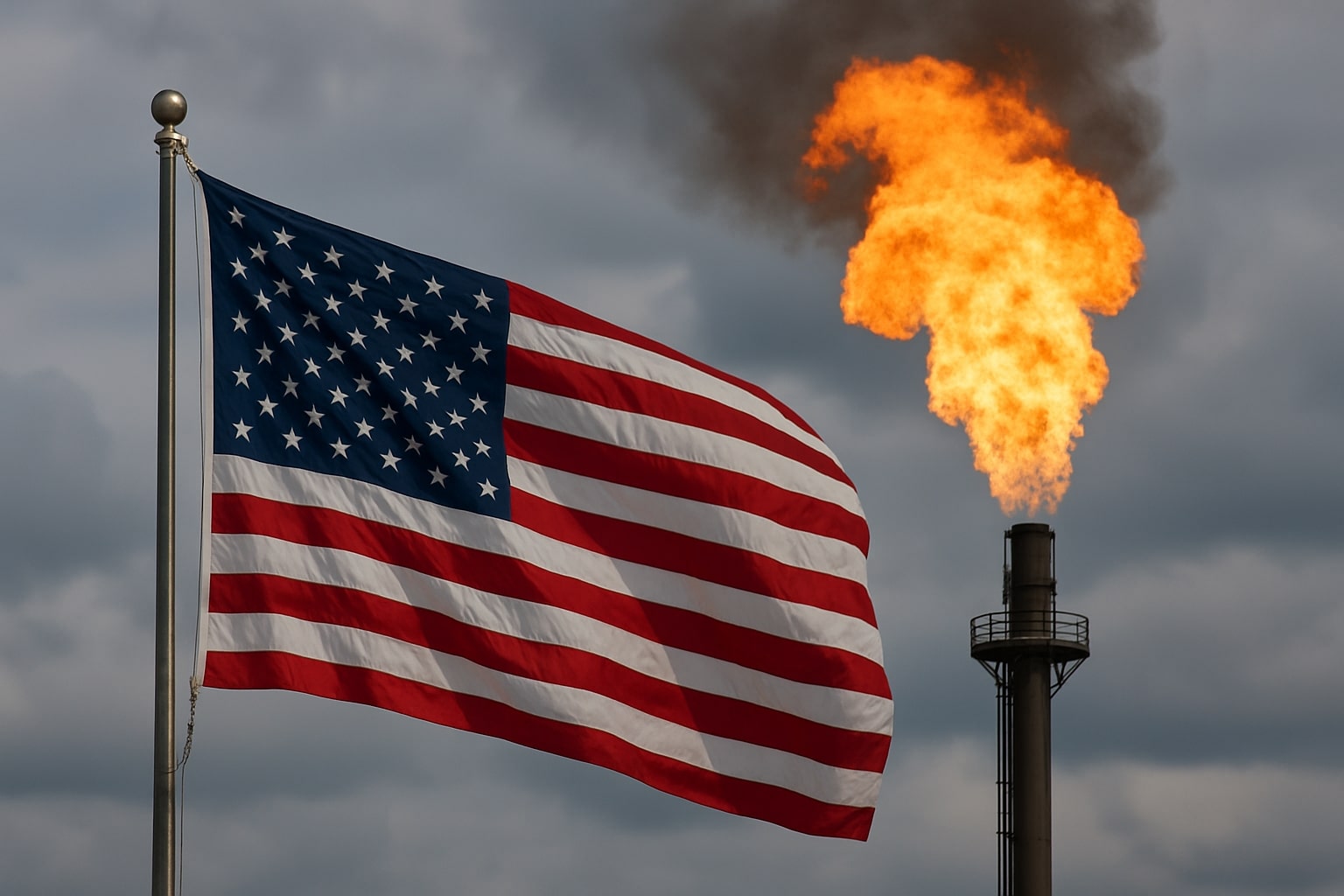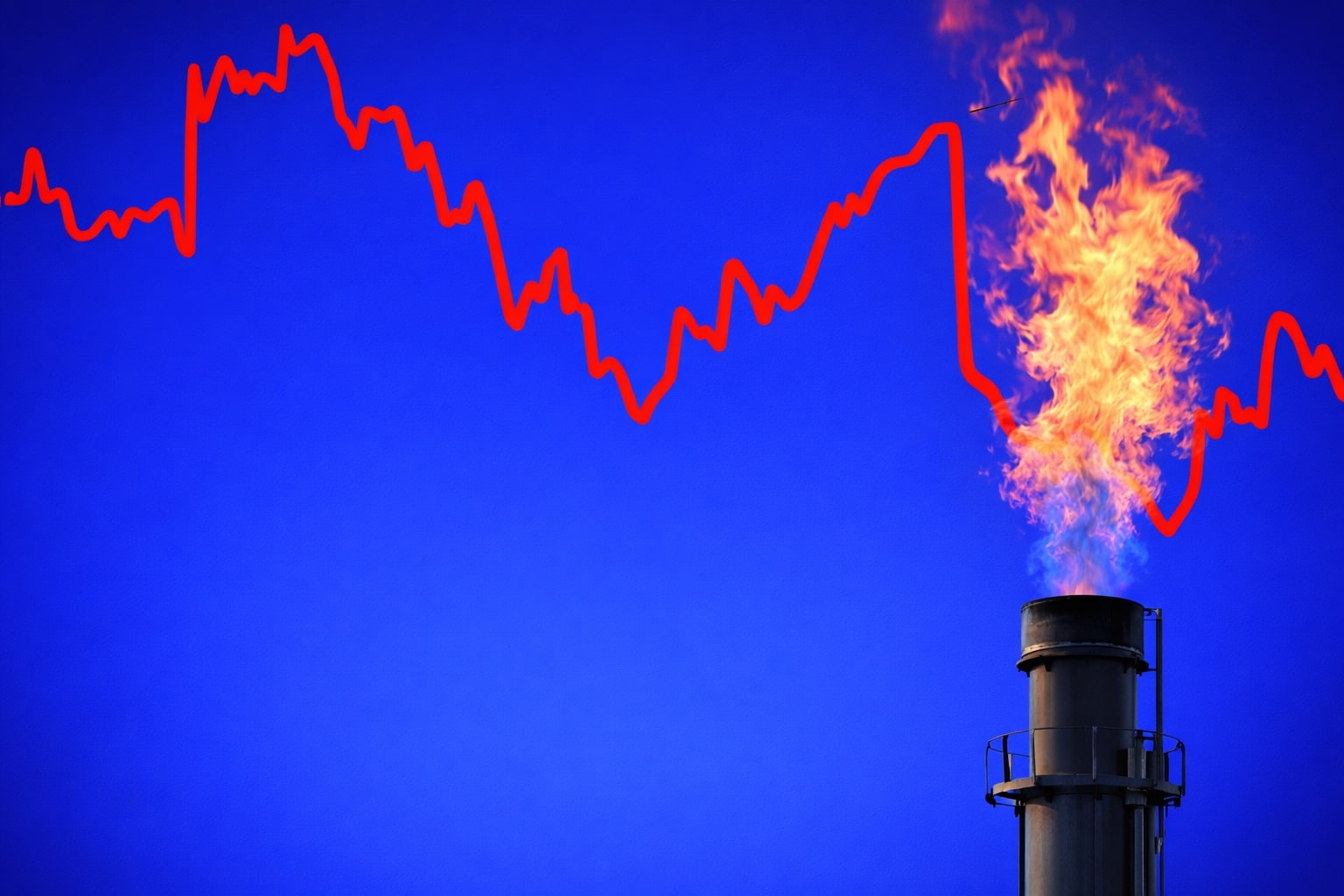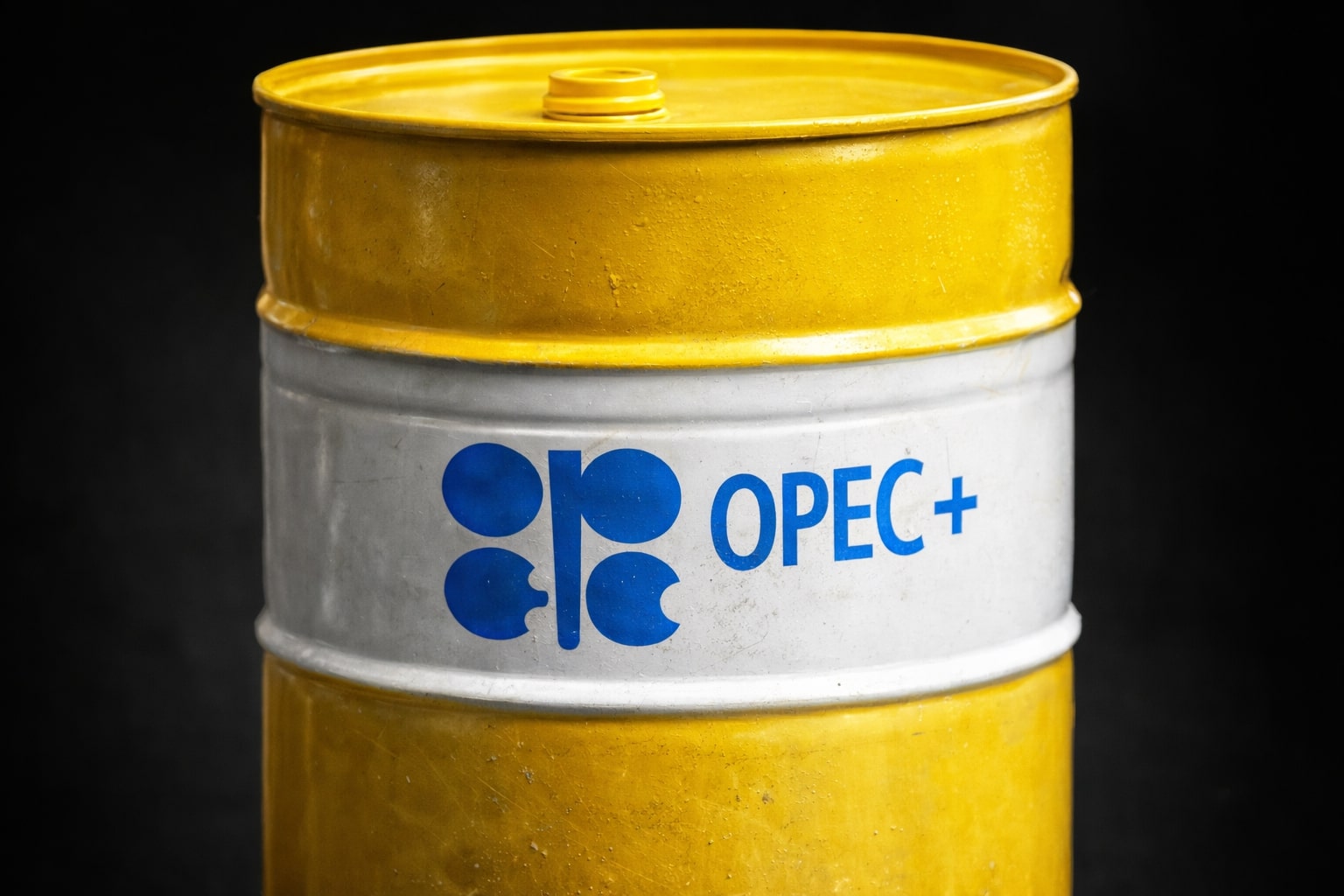July NG=F Weakens Toward 1.5-Week Low on Surging Inventory Pressure
Natural gas futures slipped to a 1.5-week low with the July contract closing at $3.49 after losing 0.74% on Wednesday. The selloff deepened as the market braced for a 107 bcf inventory injection — well above the five-year average build of 87 bcf. This follows last week's bearish EIA report showing a 122 bcf injection, handily surpassing both the 113 bcf consensus and the 98 bcf seasonal norm. As of May 30, storage stands 4.7% above the five-year average, despite being 10.4% below the same period last year.
Gas Supply Overhang Meets Flattening Demand Growth
Lower-48 dry gas production rose to 104.5 bcf/day, up 3.4% year-over-year, according to BNEF. However, gas consumption remains flat, with demand holding at 69.2 bcf/day — unchanged from last year. Liquefied natural gas exports offered modest relief, climbing 1.8% week-on-week to 13.8 bcf/day, but not enough to offset domestic oversupply. U.S. electricity output also declined 2.7% y/y for the week ending June 7, weakening the utility sector’s gas burn rate. In the past 52 weeks, total U.S. power generation is up 3%, but short-term softness in grid output is dragging on gas demand.
Heat Risk Ahead But Bulls Remain Cautious
Atmospheric G2 forecasts rising heat from June 16–20 across the central and eastern U.S., a setup that typically boosts air conditioning demand and gas-fired electricity generation. Still, traders are skeptical after recent rallies failed to hold. Gas remains vulnerable to storage-driven pullbacks until heatwaves drive persistent cooling demand.
Rig Count Surges But Economic Viability Declines
U.S. active gas rigs climbed to a 15-month high of 114, up five rigs in a week. While this appears bullish on the surface, the rig surge arrives amid margin erosion. Today’s drilling activity is far removed from the 2022 peak of 166 rigs and only modestly above the September 2024 cycle low of 94. Importantly, breakeven economics are deteriorating. In the Permian’s Delaware and Midland Basins, prime wells have already been exhausted, leaving operators to pursue Tier 2 and Tier 3 prospects with breakevens now well above $48.
AI and LNG Boom Clash With Limited Infrastructure
Natural gas demand is set to explode as AI data centers, bitcoin miners, and LNG export terminals multiply across the U.S. However, the industry faces a double bottleneck: infrastructure lags and workforce attrition. GE Vernova and Siemens Energy report five-to-seven-year lead times on new turbines due to reduced post-2020 capacity. Simultaneously, the skilled labor base that built the early 2000s gas plant boom has mostly retired. NextEra’s CEO warned that building new gas plants today costs 3x more than projects completed just two years ago. One utility confirmed a 2.5x cost increase for similar units due to inflation in engineering, procurement, and construction.
Global LNG Tugs U.S. Prices Higher With No End in Sight
The U.S. Energy Information Administration forecasts Henry Hub prices to rise 43% in 2025 and another 27% in 2026 as global demand from Asia and Europe squeezes U.S. availability. Gas exports have reshaped domestic pricing. U.S. production, once trapped by local constraints, is now fully exposed to global arbitrage. LNG terminals draw down Gulf Coast gas, pressuring the balance for Midwest and Northeast utilities.
India’s Demand Ambitions Face Bureaucratic Gridlock
India’s vision to increase natural gas to 15% of its energy mix by 2030 (from 6% in 2022) hinges on city gas distribution. But execution is failing. While 120 million piped gas connections are targeted, only 15 million exist, with just 1.6 million added annually. To hit 2030 goals, yearly additions must surge to 18 million — an 11x acceleration. State-level bureaucracy, inconsistent permitting, and a broken tax regime (PNG taxed under VAT while LPG enjoys GST support) make it nearly impossible for PNG to scale. Assam and Karnataka have tried to streamline approvals, but national coordination is lacking. Meanwhile, LPG’s 330 million-user base enjoys price subsidies, crushing PNG’s competitiveness.
Clean Energy Bill Repeal Exacerbates Gas Overdependence
The repeal of clean energy subsidies via the “One Big Beautiful Bill Act” pulls 340 GW of clean generation out of the pipeline, driving wholesale power prices up 74% over the next decade. With solar and wind slowed, gas-fired capacity faces mounting pressure to fill the gap — despite labor shortages, hardware delays, and higher capital costs. The policy shift exposes electricity markets to gas price volatility just as LNG exports increase and AI growth compounds load demands.
NG=F Faces Conflicted Path as Margins Tighten and Globalization Intensifies
Despite decades of low prices, natural gas is no longer cheap. A combination of deferred infrastructure investment, policy rollback, and booming export demand has reversed the deflationary tide. Natural gas is moving from regional to global commodity status — with LNG acting as the price equalizer. Yet capacity bottlenecks in transport, labor, and turbines ensure that new supply will not come quickly or cheaply. With U.S. storage strong but global arbitrage tightening the margin, the market now reacts to dual forces: hot weather and export flows.




















